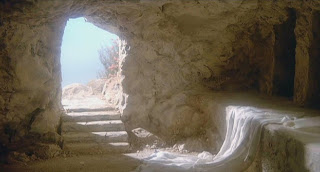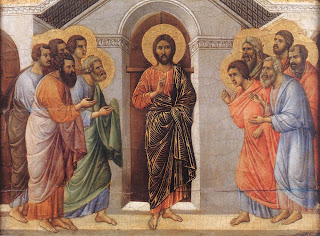 Over at the Divine Life blog, Eric Sammons recently probed a typical position that many modern Biblical scholars take. Many academics hold the historical Jesus, the one who walked the Earth 2,000 years ago, distinct from the Jesus of Christianity and the Early Church. Strong efforts have been made to divorce these two characters of Jesus. At its core, it’s an attempt to separate Jesus’ humanity and his divinity, to deny that Jesus is really God.
Over at the Divine Life blog, Eric Sammons recently probed a typical position that many modern Biblical scholars take. Many academics hold the historical Jesus, the one who walked the Earth 2,000 years ago, distinct from the Jesus of Christianity and the Early Church. Strong efforts have been made to divorce these two characters of Jesus. At its core, it’s an attempt to separate Jesus’ humanity and his divinity, to deny that Jesus is really God.
A main reason scholars pursue this separation is their unwillingness to accept Scripture’s Resurrection accounts as historically accurate. They refuse to believe that a man, acting as God, died, spent three days in a tomb, and then raised himself back to life before appearing to hundreds of people. That sort of miracle doesn’t fit in the dominant scholarly worldview of scientism, which rejects as truth anything that can’t be proven through the five senses.
In his article, Eric points to a key piece of evidence to argue that the Resurrection, Jesus’ greatest miracle and the one that proves that he is God, is actually true: the empty tomb. At one point, Jesus was in a tomb, and a few days later he was not. Few modern scholars deny this, and it would seem to point to the story the Bible depicts, that Jesus rose from the dead.
But, by itself, the empty tomb isn’t enough to prove Jesus’ resurrection. An empty tomb alone could mean that the body was stolen, or at the very least moved. Or it could mean that Jesus was never placed there in the first place.
 But Scripture doesn’t just offer the empty tomb. It also reveals the ‘resurrection appearances’. Hundreds of people saw, touched, and interacted with the resurrected Jesus for many weeks after his death. This reality is harder to disprove than the empty tomb, because not only do we have multiple accounts of people encountering Jesus after his death, but we also see the effects of these appearances.
But Scripture doesn’t just offer the empty tomb. It also reveals the ‘resurrection appearances’. Hundreds of people saw, touched, and interacted with the resurrected Jesus for many weeks after his death. This reality is harder to disprove than the empty tomb, because not only do we have multiple accounts of people encountering Jesus after his death, but we also see the effects of these appearances.
Many people who had seen the risen Jesus were so convinced of his resurrection that they were willing to die for it. Large groups of people don’t die for a second-hand, or self-invented legend. Beyond that, the Roman Empire would have squashed the explosive Christian religion if it could. All they needed to do was produce the body of Jesus, and it would have died immediately. That would have meant that he wasn’t resurrected, he wasn’t God, and the movement was over.
But none of that happened. The movement grew, the appearances of Jesus were verified, and the Empire could not prove that Jesus remained dead.
However, like the empty tomb, the resurrection appearances don’t provide enough evidence by themselves that Jesus is God. If there was no empty tomb, the resurrection appearances could be explained away through many theories: two of the more popular propositions are that Jesus was never actually crucified (a twin was in his place) or that Jesus didn’t actually die on the cross, he just fainted or swooned.
But our Faith holds neither piece of evidence alone to prove that Jesus is God. Both pieces are always presented together, and when that happens, their impact is amplified. With the empty tomb and the ‘resurrection appearances’ together, the only logical conclusion is the one the Bible presents: Jesus is the risen God!
I’ve considered giving a talk on this subject at my parish before the next Easter celebration, tentatively titled “Did Jesus really rise from the dead?” I believe that the reality of Jesus’ resurrection–the miracle proving him to be God–is the hinge on which all spiritual zeal turns. When people become convinced, without a doubt, that Jesus is still alive today, their whole perception of life, purpose, and identity changes. They no longer live in empty randomness. Instead, there is purpose and a loving God still guiding the world.
This is why the first great message of Christianity was “Jesus is risen!” Paul proclaimed this everywhere he went. He understood the inherent energy of this reality, one that still has explosive power today.
May our Church continue to be reminded and convinced that we don’t worship a dead God, but One who is alive!

